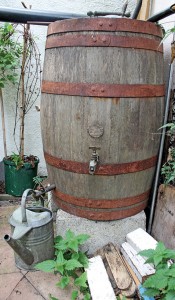
“Water, water everywhere,” the poem goes, “and not a drop to drink.” Things aren’t quite that bad yet, but the imminent household water meters and the high cost of living are a source of anxiety for householders nationwide.
The flipside of the situation is that we live in a new era of homebrewed solutions to problems that once could only be mastered by government. The pipes that carry our water – like the wires that carry our electricity and the fibre optics that carry our broadband signals – are examples of linear infrastructure. They snake under our feet and join the dots of our day to day needs.
There is a case to be made that water processing in particular no longer needs to be a centralised matter, that vast water processing plants and water piped into our homes from outside may not be the be-all and end-all of urban living. How plausible is this? NewsFour investigates.
Last year, we ran a related article quoting a respectable business publication, which stated that Dublin could be considered as being one heatwave away from a major water shortage. Whether this was an alarmist statement or not, this year has seen the much-discussed installation of water meters, with coverage often framed in a context of public outrage and organised resistance to the water charges.
There is no doubt, however, that the government has settled on its strategy with conviction. Details released in early August of this year have tried to communicate an intention to be fair. The first 30,000 litres of water used per household will be free, and there will be no standing charge. In principle, this means that households that use little water will end up paying no charge for the year, if they can keep their water usage within the allowance of 30,000 litres.
That sounds great until you look at the numbers for water consumption in Ireland as it currently stands. According to independent research conducted on behalf of Irish Water, published in October last year, the average Irish person consumes 150 litres of water per day (!), most of which is simply flushed away or drained down plugholes. This adds up to 54,750 litres per person per year, so a given individual is likely to exceed their annual free allotment of running water.
Showering, brushing your teeth under a constantly running tap, and washing dishes under a running tap are identified as main offenders of over-use, along with flushing the toilet after every use.
What then can be done? NewsFour spoke with Noel Dolan, who operates a business based in East Wall, Dublin about the virtues and practicality of rain harvesting as an alternative to relying on piping water in from outside.
“I started researching this around seven years ago. I was on a site in Bray, while it was lashing down rain, and thinking “What can be done with all this rain?” At the time, Noel explains, the standard for a rain butt were the large oil tanks that were attached to many houses for running stoves and heating. He eventually found a German company who produced storage tanks that could be installed in a garden without being awkward, or even ugly. “In the last six months, there’s been a large increase in demand, as people have seen the meters being installed on the news.”
For his part, he feels that it is the water charges, rather than environmental concerns, that are motivating interest in rain harvesting systems. “There are different benefits for different people. Water quality is also an issue. There are a lot of hard water areas around Dublin; Howth for instance, where limescale build-up means people are replacing appliances very often as they become clogged up. Rain water is soft water.”
Noel is not opposed to the water charges, feeling that if you provide a totally free resource to people, they will tend to take it for granted and abuse it. “I think [the charges] are right but the way they’re doing it is very harsh. Hitting people over the head with a €300 bill is harsh. I’ve seen the wastage myself and education is where we’re lacking: things like washing your veg in a pot of water, rather than under a tap.”
One of the reasons harvesting is viable now is that filtration has become cheaper at the domestic scale; biosand filters, new patents that have reduced the cost of production, and disaster relief solutions for creating potable water, such as solar pasteurisation.
Within the range provided by the Irish Water numbers, the average person is allotted 80 litres per day. A five-minute shower and five flushes of the toilet per day will use that. Children under 18 are granted a free allotment of 21,000 litres per year, to ease household burdens. Fine for small children, but a teenager using a power shower will literally power through that amount in four minutes.
Getting completely ‘off the grid’ may not be an option for most, but rain harvesting, even of the well-constructed homemade variety, will be a big help for families concerned about the charges, which commence in earnest this October. Forewarned is hopefully forearmed.
By Rúairí Conneely

